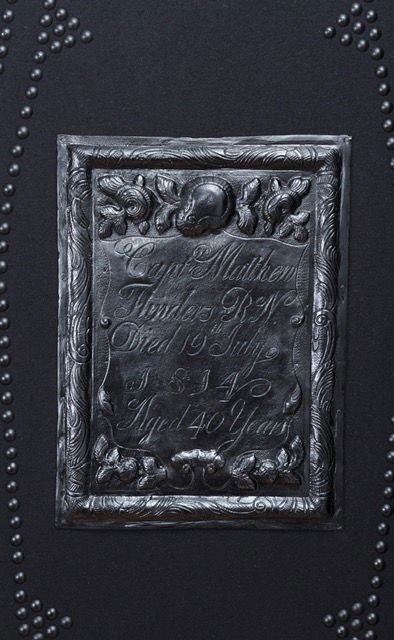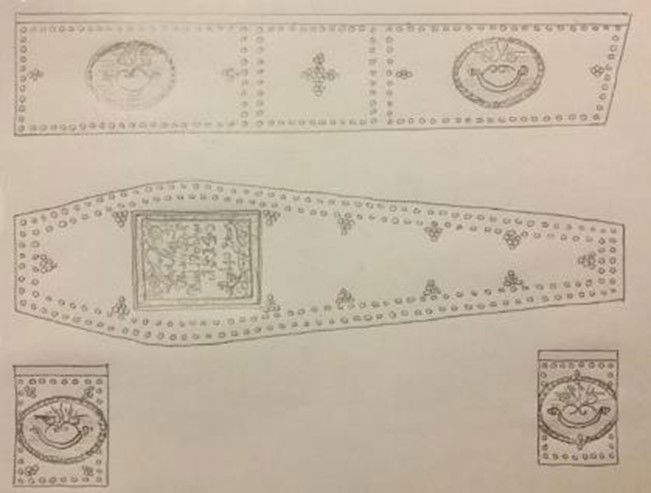Decoration
After the basic shape was achieved, then came decoration. Generally, modern coffins are not as ornate as 17th to 19th century examples. By 1814 (the year Flinders died), there was an array of coffin fittings and decorative styles available, which could be purchased according to fashion, as well as the taste and pocket of the customer.
The records show that the Flinders' family chose a plot in the second burial ground and did not purchase a grave marker. Similarly, the coffin they bought wasn’t the most expensive available but still, nevertheless, of good quality.

Photo Paul Braham
The principal features of an early 19th century coffin were decorative plates and handles (aka grips). Flinders' breastplate (name plate) had survived in good condition because it was made in lead, but the coffin’s other fittings had rusted almost to nothing because they had been made with thin sheets of iron.

However, the most striking difference between Flinders' coffin and a modern one was its external fabric covering, which would have probably decayed and disappeared within a year of the burial. Prior to waxed and polished woods being introduced and becoming the dominant style from the late 19th century, coffins were covered with fabrics, such as baize or velvet, and decorated with hundreds or thousands of upholstery studs. These studs were set in rows and clusters to form a wide variety of patterns.